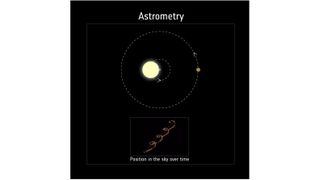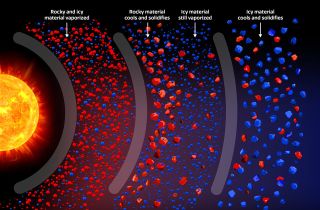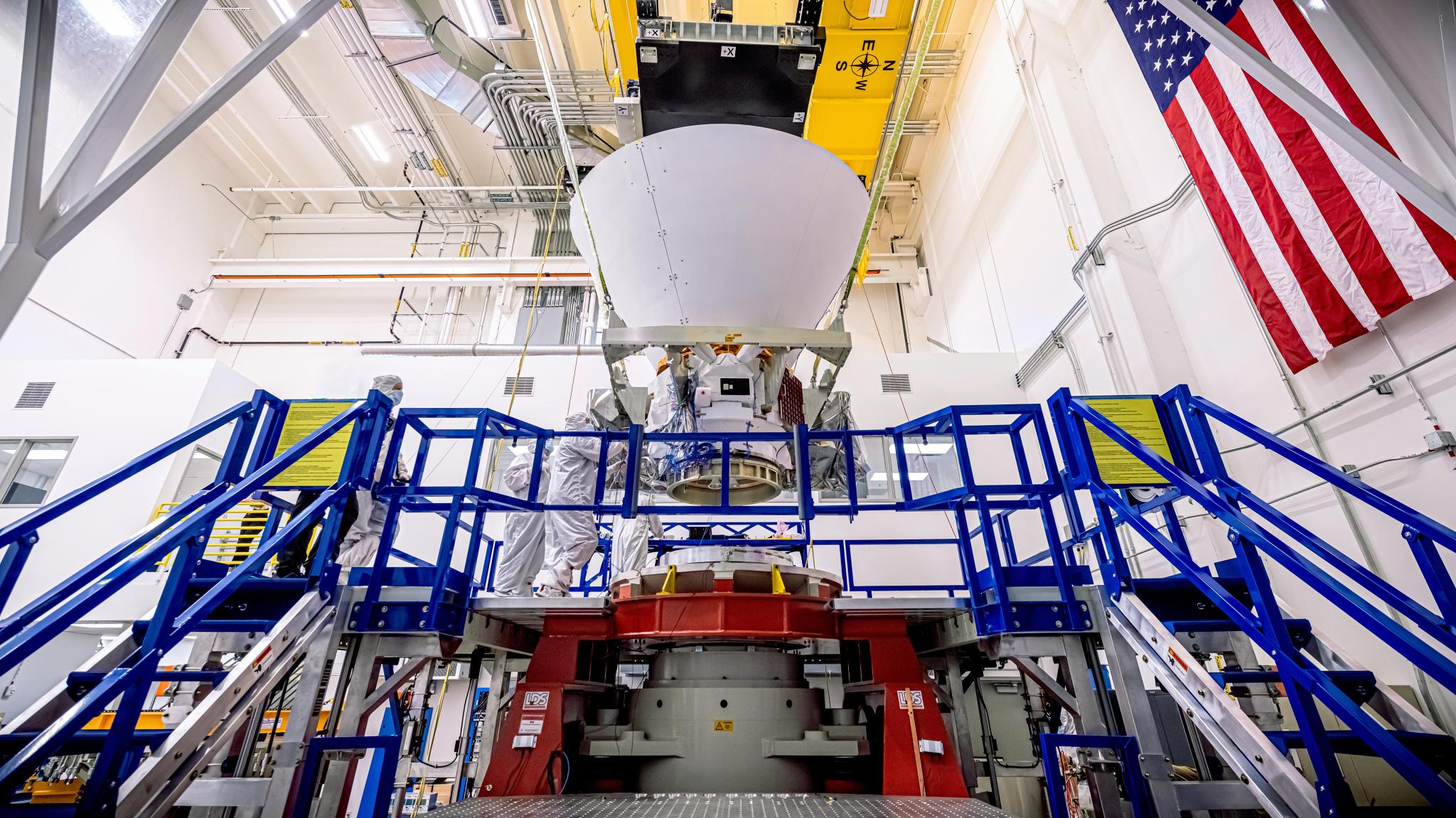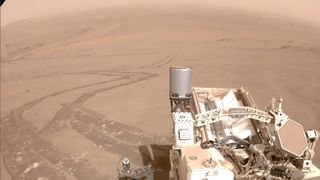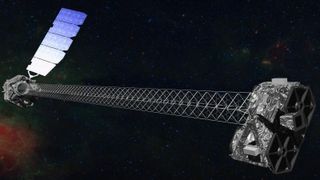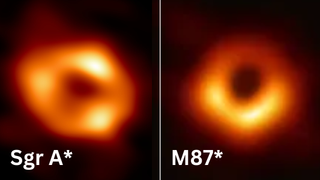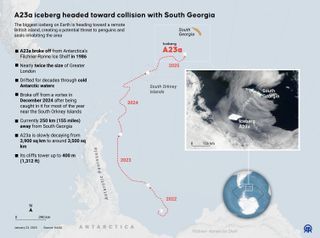One of the largest exoplanets to be found orbiting a relatively low-mass star has been discovered, thanks to the way the planet’s gravity drags its star around on its journey through space. The planet is the fourth world to be spotted in data from the European Space Agency’s Gaia mission, which was designed to map a billion stars in our Milky Way galaxy, cataloguing their masses, luminosities, temperatures and motions through space. It’s this latter property that led to the discovery of the giant exoplanet Gaia-4b. It orbits a star…
Read MoreTag: The Universe
‘Roasting marshmallow’ exoplanet is so hot, it rains metal. How did it form?
Astronomers may have inadvertently complicated the mystery of how strange “roasting marshmallow” planets form. Using the Gemini South telescope, researchers found that the “hot and puffy” ultra-hot Jupiter planet WASP-121b may have formed closer to its star than previously believed, challenging what we know about how planets form. Since the discovery of the first planet outside the solar system in the mid-1990s, the catalog of extrasolar planets, or “exoplanets,” has grown to over 5,000 entries. Many of these exoplanets are like nothing found in our solar system. The hot and…
Read MoreA year in isolation: 366-day mock moon mission wraps up in Russia
On Nov. 14, 2024, the Institute of Biomedical Problems (IBMP) of the Russian Academy of Sciences marked the successful completion of SIRIUS-23, a year-long biomedical isolation experiment simulating the conditions of deep-space travel and lunar surface operations. For 366 days, a crew of six analog astronauts lived and worked in a sealed environment, a meticulously controlled Earth-based stand-in for interplanetary missions of the future. The SIRIUS (Scientific International Research in Unique terrestrial Station) project, launched in collaboration with NASA’s Human Research Program and the IBMP in 2017, had previously conducted…
Read More6 Things to Know About SPHEREx, NASA’s Newest Space Telescope
5 min read Preparations for Next Moonwalk Simulations Underway (and Underwater) NASA’s SPHEREx observatory undergoes testing at BAE Systems in Boulder, Colorado, in August 2024. Launching no earlier than Feb. 27, 2025, the mission will make the first all-sky spectroscopic survey in the near-infrared, helping to answer some of the biggest questions in astrophysics. BAE Systems/NASA/JPL-Caltech Shaped like a megaphone, the upcoming mission will map the entire sky in infrared light to answer big questions about the universe. Expected to launch no earlier than Thursday, Feb. 27, from Vandenberg Space…
Read MoreMars was hot then cold then hot again. Could life have really survived there?
New research suggests that temperatures on ancient Mars may have fluctuated between hot and cold periods through a relatively short period during its lifetime of billions of years. But these hot and cold spells may have been detrimental to life if it existed on the Red Planet. Mars may be a dry and arid planet today, but scientists know that Earth’s neighbor was much wetter and much more like our planet in its ancient past. These new findings from a team of researchers at the Harvard John A. Paulson School…
Read MoreAstronomers find hundreds of ‘hidden’ black holes — and there may be billions or even trillions more
Astronomers have discovered hundreds of hidden supermassive black holes lurking in the universe — and there may be billions or even trillions more out there that we still haven’t found. The researchers identified these giant black holes by peering through clouds of dust and gas in infrared light. The finds could help astronomers refine their theories of how galaxies evolve, the researchers say. Hunting for black holes is difficult work. They are the darkest objects in the universe, as not even light can escape their gravitational pull. Scientists can sometimes…
Read MoreNASA X-ray telescope Chandra discovers black holes ‘blow’ on their food to cool it down
Anyone who has experienced the blistering pain associated with biting into a fresh apple pastry or taking a swig of hot coffee can attest to the importance of blowing on your food or drink before introducing it to your mouth. It turns out that black holes may perform the cosmic equivalent of this routine, “blowing” on blistering hot matter before they gobble it down. This supermassive black hole-food cooling process was discovered by astronomers using NASA’s Chandra X-ray telescope and the Very Large Telescope (VLT) to observe some of the…
Read MoreSatellites watch world’s largest iceberg on crash course with Antarctic penguin island (photo/video)
The world’s largest iceberg, A23a, is drifting toward South Georgia Island, a remote and ecologically vital wildlife haven. This massive block of ice, about the size of Rhode Island, poses a significant threat to the delicate ecosystem of the island, home to penguins and seals. Satellite images, including recent data captured by NOAA’s GOES East satellite on Jan. 22, 2025, are closely monitoring the iceberg’s slow journey through the Southern Ocean, where it could soon reach the shallow waters surrounding South Georgia. Breaking free Iceberg A23a has been a concern…
Read MoreSupermassive black holes in ‘little red dot’ galaxies are 1,000 times larger than they should be, and astronomers don’t know why
Using the James Webb Space Telescope (JWST), astronomers have discovered distant, overly massive supermassive black holes in the early universe. The black holes seem way too massive compared to the mass of the stars in the galaxies that host them. In the modern universe, for galaxies close to our own Milky Way, supermassive black holes tend to have masses equal to around 0.01% of the stellar mass of their host galaxy. Thus, for every 10,000 solar masses attributed to stars in a galaxy, there is around one solar mass of…
Read MoreEarth is bombarded with rocks from space — but who gets to keep these ultimate antiques?
Every day, about 48.5 tons of space rock hurtle towards Earth. Meteorites that fall into the ocean are never recovered. But the ones that crash on land can spark debates about legal ownership. Globally, meteorite hunting has become a lucrative business, with chunks of alien rock traded online and shipped between countries. Meteorites hold the key to the mysteries of the universe, but increasingly, significant scientific finds are being lost to private collectors. Last year, New Zealand formally recorded an apple-sized meteorite weighing 810g. It fell on Department of Conservation…
Read More